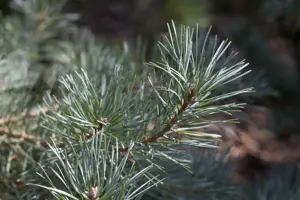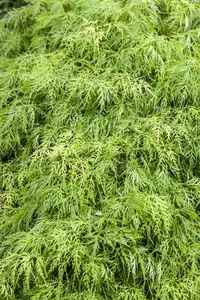Malus sylvestris 'Bittenfelder' - 1/0 40-60 CM
Malus sylvestris 'Bittenfelder' - 1/0 40-60 CM
Description
The Common crab apple (Malus sylvestris) is an overhanging small tree with decorative, yellow fruits. It produces white, cup-shaped flowers from May to June. The Common crab apple also has glossy, egg-shaped, medium-green leaves. In a sunny to semi-shady location with well-drained, calcareous, nutrient-rich, loamy soil, it usually reaches a height of around 10 metres and is around 7 metres wide.
Synonym
Synonyms (botanical): Malus communis, Malus pumila.
Bulletpoints
* fruit ornamentation
* red-brown shoots
* suitable for flowering hedges
* the blossoms are highly favoured by bees, bumblebees and hoverflies
* attractive light yellow autumn colouring
* wind-resistant, flood-tolerant, cannot be built over
Leaves
The deciduous leaves of the Common crab apples are medium green, ovate, glossy, alternate. They are about 4 - 6 cm in size. Common crab apple is bright yellow in autumn.
Bark
Grey, flaking, scale-like bark makes this plant an eye-catcher in any garden.
Spread
Europe to western Asia.
Frost hardiness
The Common crab apple has good frost hardiness.
Growth
Overhanging.
Water
The plant has a medium water requirement.
Location
Preferred location in a sunny to semi-shady position.
Soil
Normal soil.
Planting time
Container plants can be planted all year round, except when the ground is frozen and in summer heat (over 30°C).
Care
- Cut and saw wounds as well as broken branches should be treated with a wound sealant as soon as possible to prevent pathogens from entering the plant.
- A slow-release fertiliser can be used in spring. This releases the nutrients slowly and continuously so that the plant is evenly supplied over a longer period of time.
Flower
The white, cupped flowers appear from May to June.
Fruit
The yellow fruits of Malus sylvestris are particularly decorative. These appear from October.
Use
Solitary, bee pasture, landscape, hedge, bird food plant
Shoots
The shoots of Malus sylvestris are spiny, red-brown in colour.
Root
Malus sylvestris is a shallow-rooting plant and, depending on the soil, forms extensive branching roots.
- Article number99500
-
EAN codeMASBITTE-10040060
- Latin nameMalus sylvestris 'Bittenfelder'
- catalogLandscape shop



